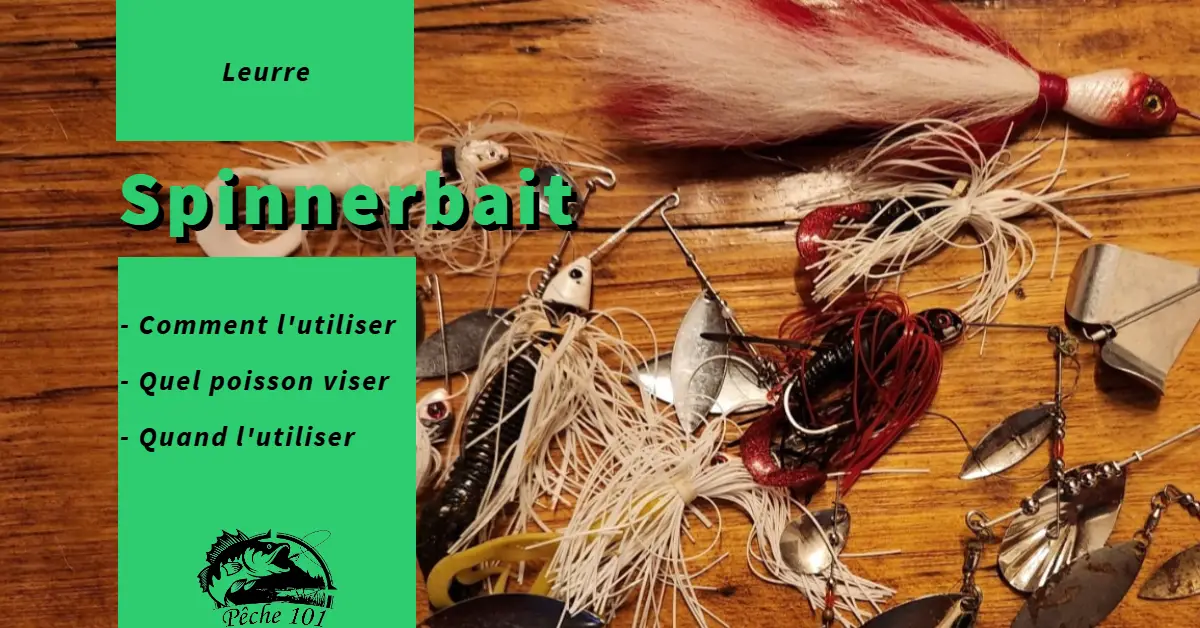The spinnerbait is a very popular and effective fishing lure, widely used all over the world to catch a variety of fish.fish species.
In Quebec, for example, it is mainly used for pike, black bass and in muskellunge.
This lure is distinguished by its original appearance, featuring metal spoons that spin and emit vibrations and flashes of light underwater, attracting predatory fish.
When choosing your spinnerbait, it's important to consider factors such as lure size, color and weight.

The different types of spinnerbaits available on the market have specific characteristics adapted to particular fishing conditions.
As far as spinnerbait fishing techniques are concerned, there are several possible animations to attract fish.
The most common are the simple linear, the stop and go and the buzzing. Each of these techniques can be very effective depending on the conditions and habits of the fish you're after.
By mastering these different animations, you'll be able to adapt your approach and considerably increase your chances of success when fishing with a spinnerbait.
Article content
What is a spinnerbait?
The spinnerbait is a type of lure used primarily for pike fishingbass and muskellunge.
It is also known to be very effective in cluttered areas, thanks to its special shape which allows it to pass through grass without catching.
The spinnerbait consists of a wire frame on which are mounted spinners and a single or double hook.
Spoons generate vibrations and reflections in the water, attracting the attention of fish.
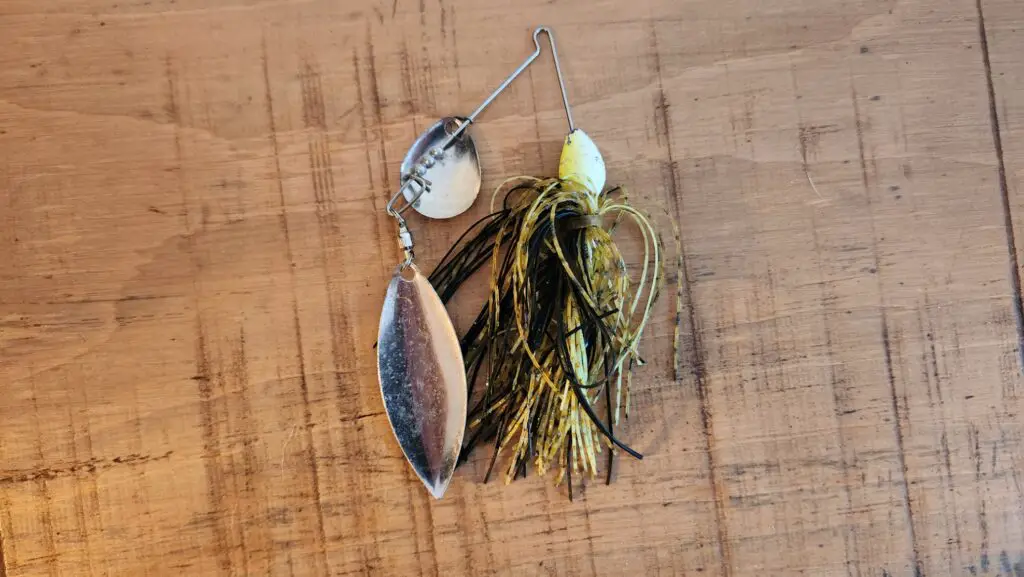
What's more, the lure is usually embellished with colourful, shiny materials such as hairs, feathers or silicone filaments, for even greater attractiveness.
To fish with a spinnerbait, simply cast your lure and reel it in at different water depths.
The spinnerbait fishing technique is easy to master and can be used in all types of environments.
There are many different types of spinnerbaits available on the market, each with its own characteristics and advantages. See below...
Spinnerbait use
To use a spinnerbait effectively, you need to adapt your fishing technique to the conditions encountered.
Choice of Color and Shape
The choice of spinnerbait color and shape is essential for successful fishing.
As for any other lureYou'll have to find the color of the day.
Feel free to change the color according to light and water conditions.
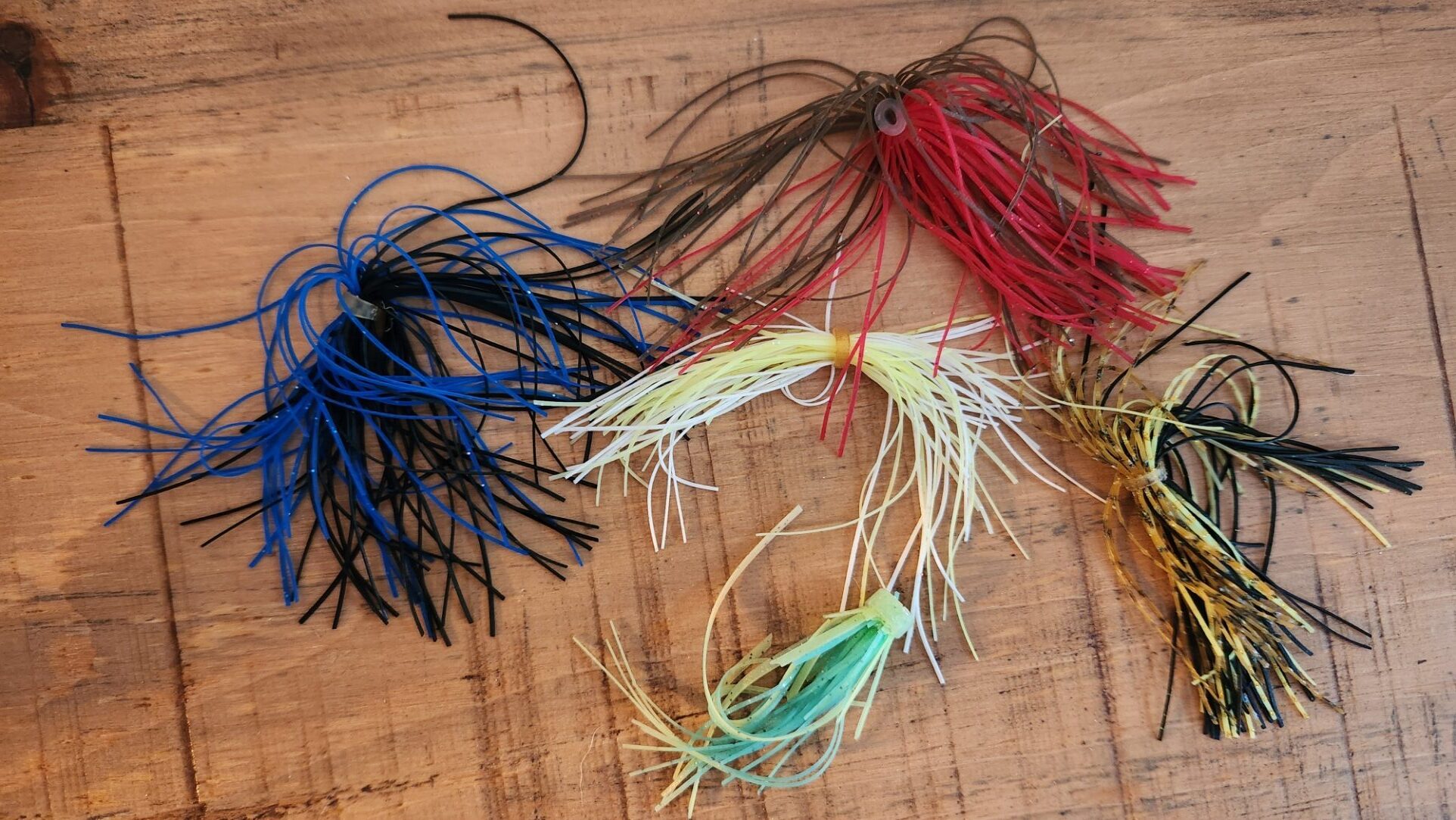
In terms of shapes, Willow Leaf blades flash more, while Colorado blades vibrate more.
So on a sunny day, a spinnerbait with Willow Leaf spoons would be a good choice.
On cloudy days or in dark water, spinnerbait with colorado spoons would be the choice due to the vibration created.
Maneuvering in Obstacles
One of the advantages of the spinnerbait is its versatility, making it easy to manoeuvre around obstacles.
It is ideal for quick surveys of large areas in search of active fish, and can be used in weed-laden or clear water.
However, avoid rough waters, as this bait does not like currents.
Vibration variation
Vibration variation is a key factor in successful spinnerbait fishing.
Adapt your lure's retrieve to the desired vibrations: slow and deep for Colorado spoons, fast and on the surface for Willow Leaf blades.
Surface, Depth and Linear Fishing
The spinnerbait can be used for surface, deep and linear fishing.
On the surface, it can be used to track carnivores such as pike that hunt close to the surface.
At depth, it is effective for flushing out fish hidden in weed beds or behind obstacles (bass and pike).
For linear fishing, the choice of fast or slow retrieve techniques is essential to optimize results. Vary your speed during and after each cast.
Spinnerbait types
Colorado Spinnerbait
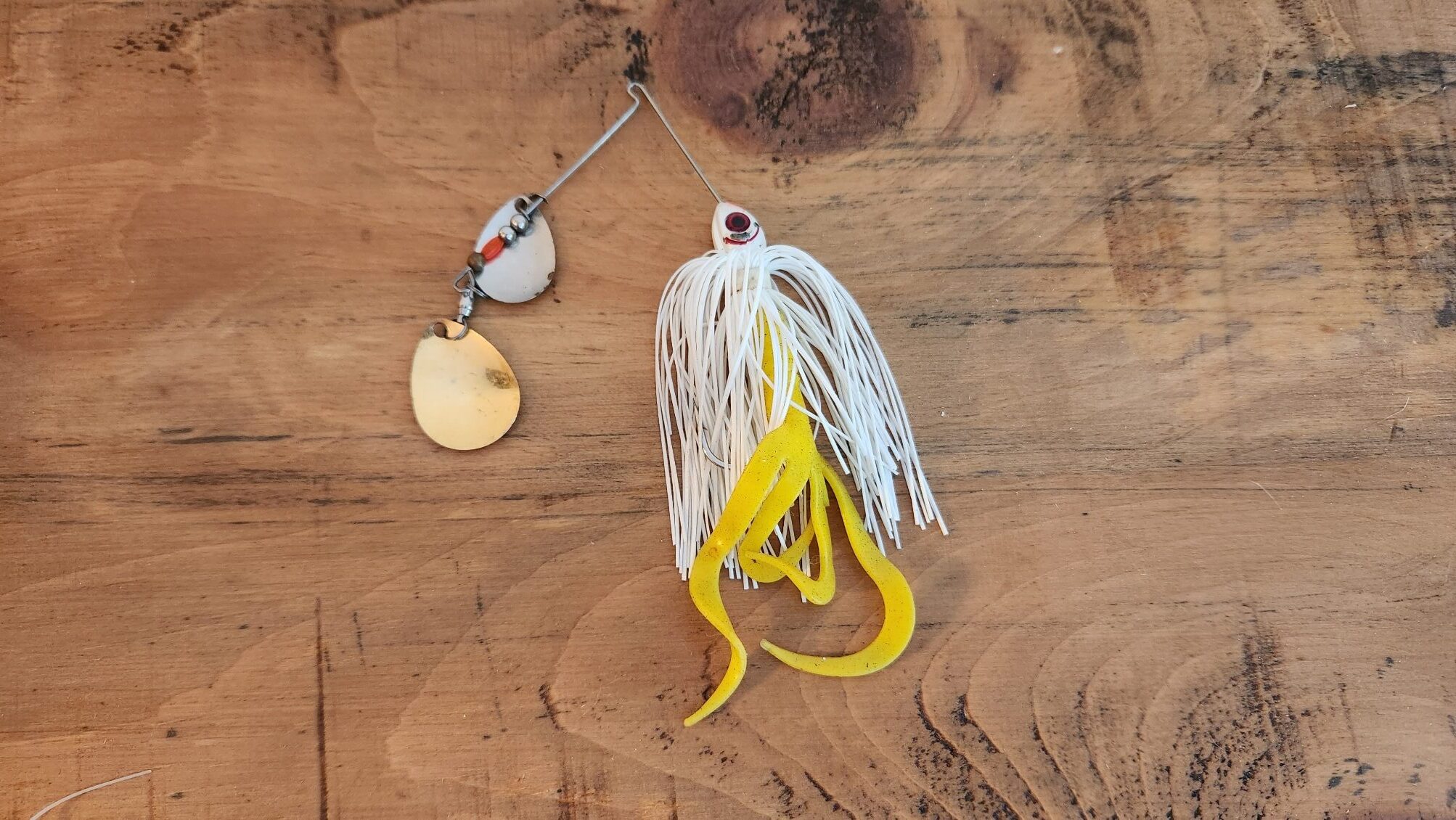
The Colorado spinnerbait features oval and rounded paddles.
These paddles (spoons) produce strong vibrations and a luminous sheen, making them ideal for fishing in turbid or shallow waters.
They are ideal for attracting pike and black bass.
Indiana Spinnerbait

The Indiana spinnerbait features intermediate paddles between the Colorado and Willow Leaf shapes.
They offer a good balance between vibration and brightness, allowing you to vary your fishing techniques and be effective in a variety of conditions.
Willow Leaf Spinnerbait
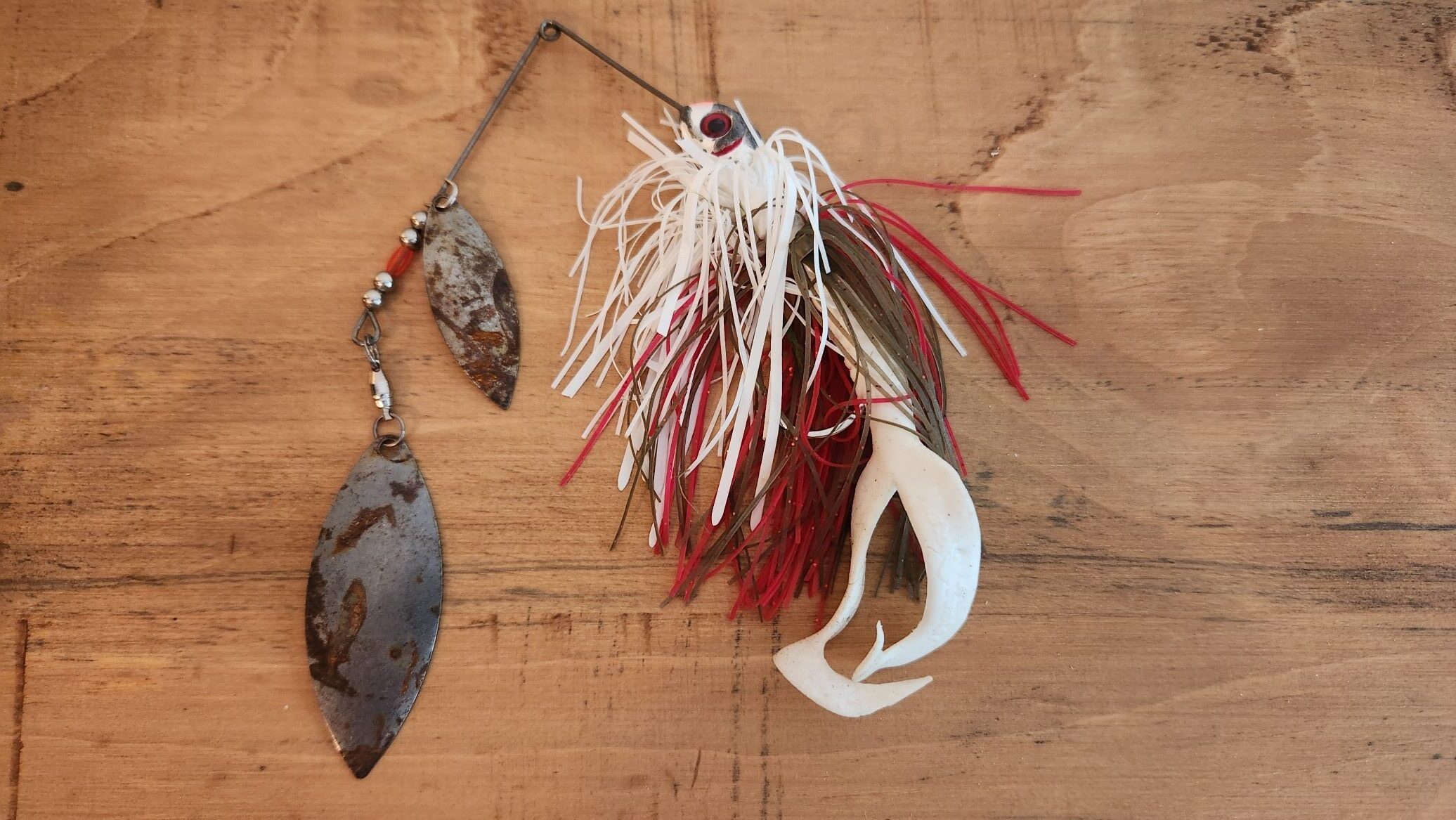
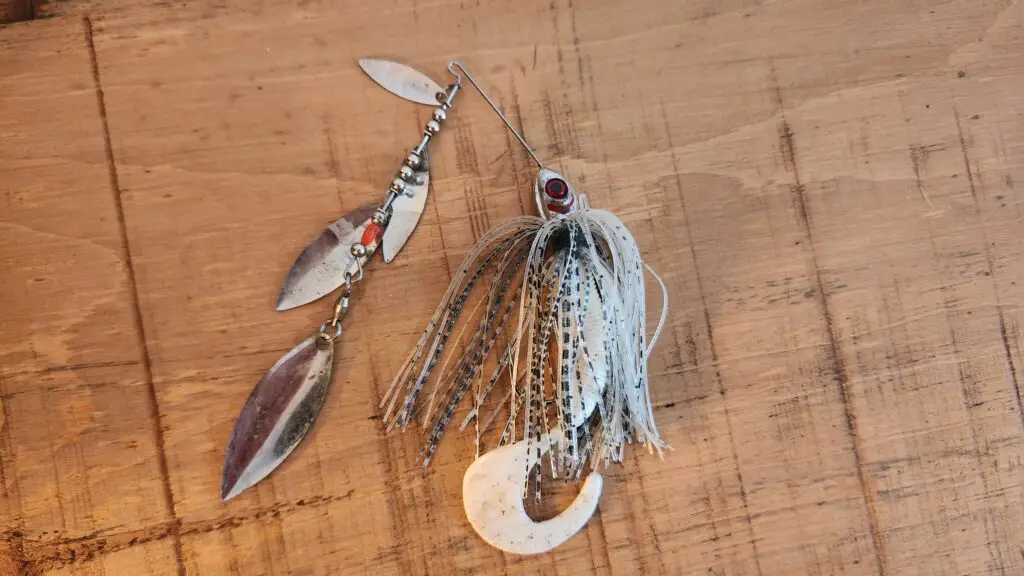
The Willow Leaf spinnerbait features elongated, tapered spoons, generating a more intense luminous glow and weaker vibrations.
This type of spinnerbait is particularly suited to fast, deep-water fishing.
Spinnerbait Buzzbait
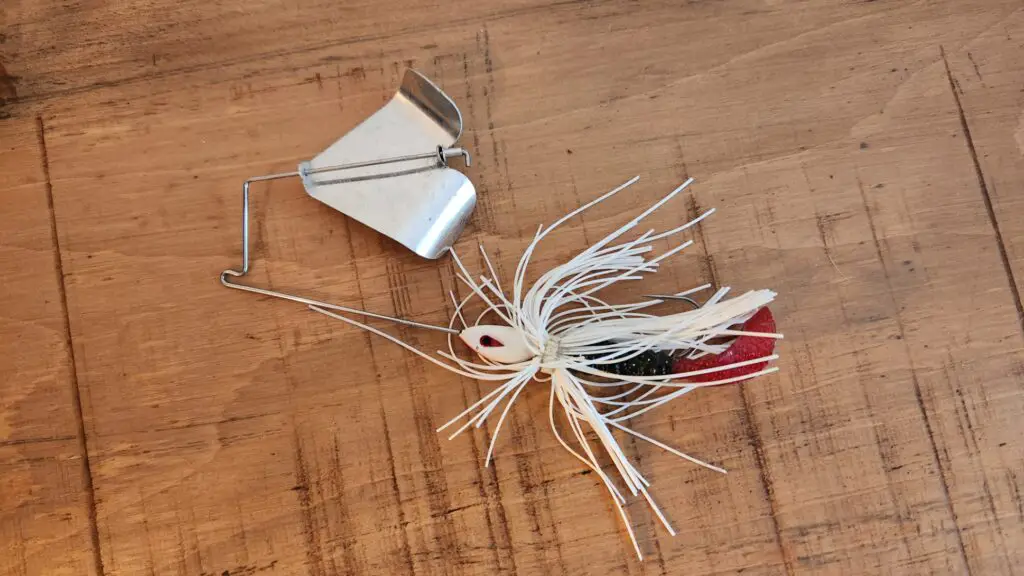
The buzzbait spinnerbait features spoons designed to create vibration and surface noise to attract carnivorous fish.
This type of spinnerbait is particularly effective for fishing over grassy areas, where fish hide.
Its characteristic sound and ability to stay on the surface make it the lure of choice for anglers looking for black bass and pike hidden in dense weedbeds.
Spinnerbait components
La Tête Plombée
The lead head is an essential part of the spinnerbait.
It is generally conical in shape and made of lead. The weight of the lead head can vary according to the desired fishing depth.
A heavier head will be used for deep fishing, while a lighter head will allow you to fish close to the surface.
Skirts
Spinnerbait skirts are generally made of silicone.
Their function is to imitate the movement of carnivorous prey.
Silicone skirts are available in a wide range of colors to suit different fishing conditions and fish preferences.
Spoons
Spoons, also known as paddles, are the metal parts of the spinnerbait.
They rotate around the frame during retrieval, producing vibrations and flashes of light to attract fish.
As described above, there are several types of spoons (paddles), whose shapes and sizes vary according to the angler's needs.
The Trailer
The trailer, or additional bait, is a soft lure attached to the spinnerbait hook.
It adds volume and realism to the lure by imitating the swim of a fish or other prey.
Trailers are often soft lures imitating worms and small fish.
The Armature
The frame is the metal structure that connects all the components of the spinnerbait.
It is generally V-shaped. The upper arm holds the spoons, while the lower arm ends with the lead head and hook.
This special design allows the spinnerbait to pass smoothly through obstacles such as branches and weedbeds.

Spinnerbait predators
The Pike
Pike, a predator often targeted by anglers, are often seduced by spinnerbaits.
This lure is one of the best for pike prospecting, thanks to its design which avoids snagging and allows effective presentation in a variety of conditions.
Pike are attracted by the movement and vibration of the spinnerbait, which perfectly simulates prey in distress.
Black Bass
The spinnerbait is also an excellent choice of lure for bass fishinga voracious and aggressive predator.
Both smallmouth and largemouth bass are attracted by the irregular movement and vibrations generated by the spinnerbait.
Using this lure in areas of weed, water lilies or submerged wood will enable you to effectively prospect the bass' preferred zones.
Other Relevant Aspects
Spinnerbait resistance
The strength of a spinnerbait depends on the quality of the materials used in its manufacture.
The main components include the V-shaped metal frame, the lead head, the filament skirt, and the paddles.
To ensure good resistance, choose a spinnerbait with a solid frame and quality paddles.
Normally, price follows quality.
Spinnerbait price
The price of a spinnerbait varies according to brand, design and quality of materials used.
The most basic and affordable models are generally around 7$ to 12$, while top-of-the-range and specialized models can cost upwards of 40$ (musky spinnerbaits, for example).
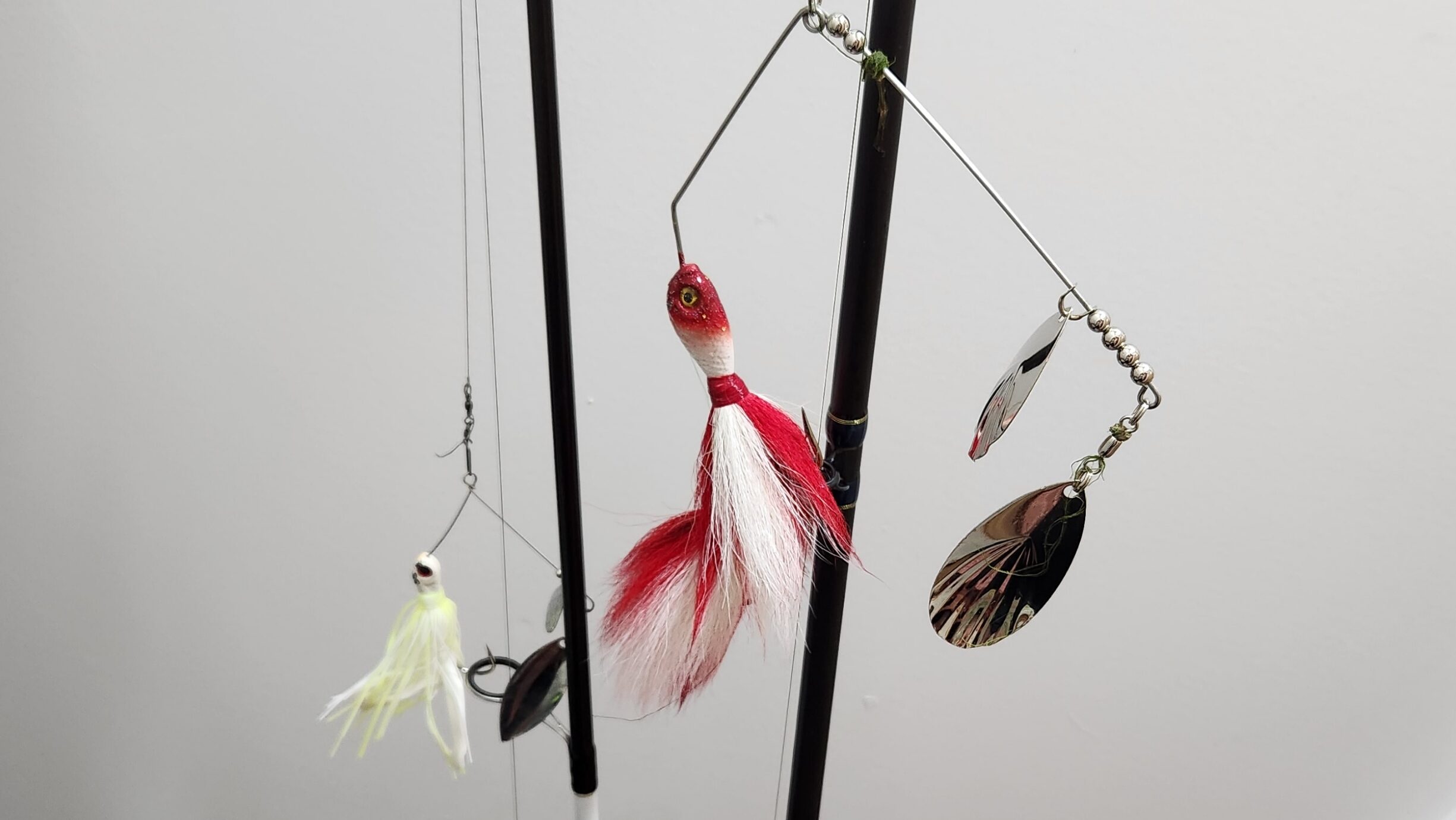
Consider your budget and your needs before making your choice, and don't hesitate to consult the opinions of other anglers to get an idea of the spinnerbait's quality and performance.
Spinnerbait assembly
If you decide to create your own spinnerbait, here's how.
Assembling a spinnerbait consists in correctly assembling the various components to make an effective bait for fishing.
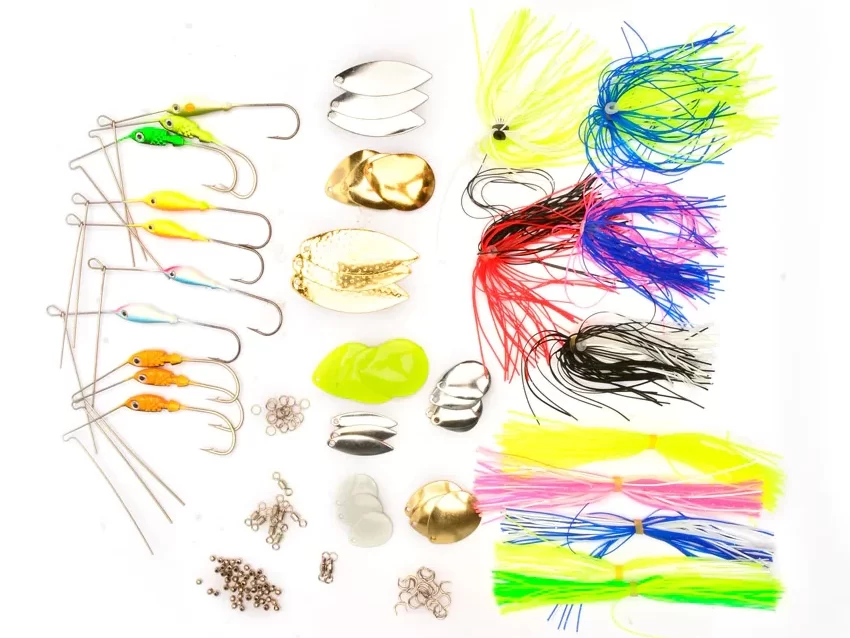
Here are a few steps and tips for success:
- Ensure that the V-shaped metal frame, lead head, paddles and filament skirt are in good condition.
- Attach the lead head to the lower part of the frame and the paddles to the upper part.
- Add the filament skirt around the lead head and single hook.
- Choose the right type of paddles for the fishing conditions and secure them.
Setting up a spinnerbait is quick and easy, and allows you to customize your bait to suit your preferences and fishing conditions.
Frequently asked questions
How to fish well with a spinnerbait?
To fish well with a spinnerbait, it's important to control the retrieve speed and vary the animations according to the conditions. Don't hesitate to adjust the swimming depth according to the position of the fish, and change model or color if you're not having success.
Which rod is best for spinnerbait?
A rod with medium to medium-heavy power and a fast action is generally recommended for spinnerbait fishing. Take lure size and overall weight into account when choosing your rod.
How to choose the right trailer for your spinnerbait?
To choose the right trailer for your spinnerbait, consider the size of the lure and the aim of the imitation. A wider, bulkier trailer will create more vibrations, while a thinner, tapered trailer will cause less resistance when swimming.
How to catch bass with a spinnerbait?
To catch bass with a spinnerbait, choose the model and color according to the conditions and the natural food present. Vary animations and swimming depths to find the combination that works best in each situation. Target grassy and rocky areas.
Under what conditions should I use a spinnerbait?
The spinnerbait is particularly effective in murky, congested waters or when fish are active on the surface. You can also use it to prospect large areas quickly.
